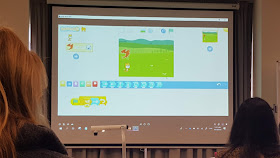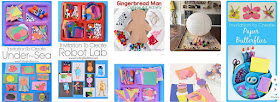The children have used it to record themselves reading and performing poetry and posting pictures of their Invitation to Create creations during Reading Tumble. I've used it to post pictures and videos of the students working and learning in the class. It is a great way to send private messages to all or individual parents. Parents are responding to the photos, videos and recordings.
But I still think I can learn some other ways to use it. So I signed up to the Breakout
Capturing learning with Seesaw with Stephanie Kitto at ULearn18.
Here is the abstract:
In this hands-on workshop teachers will learn how to use Seesaw, a student-driven digital portfolio that empowers students to independently capture and share their learning. Teachers will explore Seesaw’s built-in tools, which give students the flexibility to document and reflect on their learning, in a way that suits them. We will look at the parent communication tool that allows for the seamless sharing of work and helps to build strong home-school partnerships. This session is for teachers who are new to Seesaw and not yet participating in Seesaw for Schools.
Please install the Seesaw class app on your smartphone / tablet / iPad device and bring your device to the session. You do not need to create a Seesaw account before the session.
Stephanie began by showing some examples of how her class uses Seesaw to work independently:
- learning sight words
- practicing reading
- explaining how they solved a maths problem
Our first Activity was to do the "Get to Know You" activity.
When we had arrived we did this drawing activity, so I took a photo with my laptop camera of the work and uploaded it to Seesaw and then recorded the response. This is when I really understood about using the Add function in Activities rather than just adding it to my folder.
Stephanie then came around with Smarties. I was hungry and ate mine prettly much straight away until I realised we had to use them for an Activity. By then, this was the only maths problem I could really make.
But I couldn't take this photo with my laptop, I had to use my phone and that caused all sorts of issues getting it onto my computer so I could upload it on to Seesaw. But I figured it out.
And so I eventually added it as my response to the Activity.
Here are some examples of what others did in the workshop:
We also took photos of ourselves, uploaded them to Seesaw, and then used the Copy & Edit feature to "modernise" the photo with the drawing tools. Sadly, I forgot to screen shot that.
So how have I used this learning?
When I got back to school I did this Activity:
Some children forgot to go to the Activities label and click on the Add button. So this was a valuable time to teach this to them.
Eventually we got there though. One child has been absent since the start of term so has not responded and another has been ill and catching up on other work, so I need to chase her up this week because her picture is going to be epic.
But this is another epic pic and you can see from the graphic underneath that she has recorded her story.
We've been catching up on a lot of artwork started or planned for last term. So I then put this Activity up for them to talk about it and explain to their parents.
As you can see, one child still has not returned to school and another has been away for all the second week sick. You can also see there is one child's response still waiting for "teacher approval". Teacher approval means that you can vett all the content the children put up. It allows you to ensure it is appropriate, reflects the learning, and it creates teaching points.
We have also been using it more for maths to explain what we are learning. It's meant I've been able to dive into the thinking by the children as well and pick up who understands and who is lost in the mathematical sea.
So where to from here?
Stephanie talked to us about the copy and edit function, and this last week I talked to the Seesaw Ambassador at my school about this. So that will probably be my next teaching point with the students.
I'm also going to dive into the Activities shared by other teachers and try them out.
And then I will find a new thing I have to learn to do with this.





















































































